I'm trying to do something clever. I am creating a weather application
in which we can replace the weather API with another weather API
without affecting the code base.
Without reading further down, this first statement makes me think about a plugin architecture design, but in the process of software design, decisions must not be rushed, the more you delay, the more information you have and a better informed decision can be made, for now is just an idea to keep in mind.
I have a Base module that contains the Interface class and the Base
class. The Interface class contains the calls to the APIs (all calls
are similar, if not exact) and the Base class contains the properties
to the APIs (again, all properties are similar, if not exact).
When different modules share behaviour/state, it is a good idea to refactor them and produce base abstract classes and interfaces, so you are on the right track, but, if there are differences, those shouldn't be refactored into the base module. The reason behind that is simple, maintainability. If you start adding if clauses or switches to deal with these differences, you just introduced coupling between modules, and you'll be always having to make changes in the base module, whenever you add/modify other modules, and this is not desirable at all.
This is reflected by the Open/Closed principle form the SOLID principles, which states that a class should be open for extension but closed for modifications.
So after you've refactored the common behaviour into the base modules, then each new API should extend the base module, as you did.
Finally, I have created a Core module (includes main) to implement the
specific module class for the weather API I want to test.
Now, I know the simplest way to do this would be to use a switch
statement and enumeration. But I want to know if there is a more
clever way to do this. Maybe using a Pattern? Any suggestions?
Indeed, making use of a switch, makes it work, but its not a clean design at all, for the same reason as before, when adding, modifying or removing modules, would require to modify this module aswell, and also this code can potentially break.
One possible solution, would be to delegate this responsability on a new component and make use of a creational design pattern like the Abstract Factory, which will provide a interface to instantiate components without specifying its classes.
As for the architecture, so far, the plugin architecture still makes sense, but what if the different modules extend the base contract adding more features? One option is to use the Facade pattern to adapt the module calls and provide an output that implements an interface that clients expect.
But then again, with the provided details, this is the solution I'd suggest, but the scenario should be studied carefully and in greater detail, in order to be able to assure that these are the right tools for the job, and commit to them.

